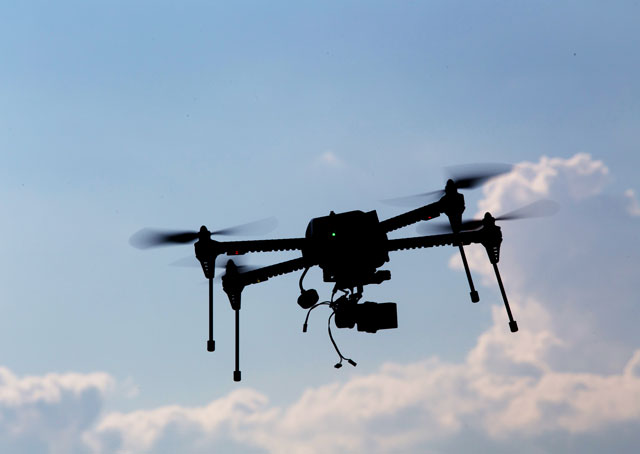
Proponents say the market for unmanned aircraft systems (UAS) will be huge and promises to change the way people live. First, say other airspace users and regulators, drones must be integrated into an existing air traffic control system that was not created with pilotless aircraft in mind.
Accomplishing that task safely, without elbowing existing users out of the way, is the goal of ever more research taking place across the United States and elsewhere. Many of the institutions that are emerging as leaders of UAS integration research came together Sept. 15 at Mississippi State University in Starkville, Mississippi, to set a collective agenda as members of an organization known as the Alliance for System Safety of UAS through Research Excellence (ASSURE).
“Our best days are just starting,” said David Shaw, Mississippi State University’s vice president for research and economic development, in a news release about the gathering of researchers, regulators, and industry members.
Breathtaking predictions about the impact of UAS on commerce, government, private lives, and, of course, the rest of aviation no longer sound like the pie-in-the-sky proclamations as drones and their capabilities are incorporated in the discourse about aviation’s future. ASSURE, which consists of 21 research universities and more than 100 government/industry partners working on 146 research projects, shared some of the expected impacts on its website.
In the first three years of UAS integration, it says, 70,000 jobs with an economic impact of $13 billion will be created. The next decade’s UAS expenditures will total $90 billion, ASSURE said, citing aerospace experts. In the meantime, drones have been used to fight forest fires, find lost hikers, and perform oil-industry monitoring research. In an unlikely collision of technologies, an ASSURE affiliate has even created “the first 3D-printed drone.”
Aeronautical academia also has embraced the drone revolution: The University of North Dakota, Kansas State University, and Embry-Riddle Aeronautical University were the first in the United States to create UAS degree programs, ASSURE added.
“Our vision is to help the Unmanned Aerial System market grow into its multi-billion dollar market potential by conducting research that quickly, safely and effectively get UAS flying alongside manned aircraft around the world,” ASSURE says in a vision statement.
While the goal could hardly sound loftier, much of the opening round of research, infused by Congress with $5 million in funding, will go into projects that go to the nitty-gritty of UAS integration.
One project “will model what happens when UAS and manned aircraft collide,” including looking at such questions as “what happens when a drone gets ingested into a jet engine or impacts the aircraft itself.” Wichita State University will lead the study, supported by Ohio State University and Mississippi State.
What happens when drones strike objects on the ground? The University of Alabama-Huntsville, Mississippi State, the University of Kansas, and Embry-Riddle Aeronautical University will study that question, using computer modeling.
Kansas State University, the University of North Dakota, and Wichita State will perform validation testing of industry-developed UAS airworthiness standards “to determine if they make UAS safer.”
Other projects include how to create conditions for safe drone operation beyond line of sight; maintenance standards and personnel training; and whether “detect-and-avoid technology used for manned aircraft can be used in unmanned aircraft,” including gathering data on “what happens if the UAS loses its detect and avoid systems.”
AOPA has often stressed that drones must be able to sense and avoid other aircraft before they can be integrated into the National Airspace System.
The FAA also is mobilizing resources toward the goal of UAS integration. In 2013 it established a UAS Integration Office to be a single agency point of contact on UAS issues, “with a vision for safe, timely, and efficient integration of UAS into the National Airspace System.” On Sept. 2 this year, the agency named two executives to lead the integration effort.
James Poss, a retired Air Force general who is ASSURE’s executive director, said in the news announcement on the Mississippi session that ASSURE’s affiliates are “working to provide the agency and industry with research to maximize the potential of commercial unmanned systems with minimal changes to the current system regulating manned aircraft.”
He also had praise for the responsiveness of the aviation regulators, who at times have been pressured to respond more rapidly to the swell in demand for drones.
“I’ve been very impressed by how fast the FAA moved to get us researching the information they need to safely integrate UAS into our national airspace. Normally it takes 15 months to allocate and evaluate research. With the FAA’s support, our team did it in 15 weeks,” he said.



